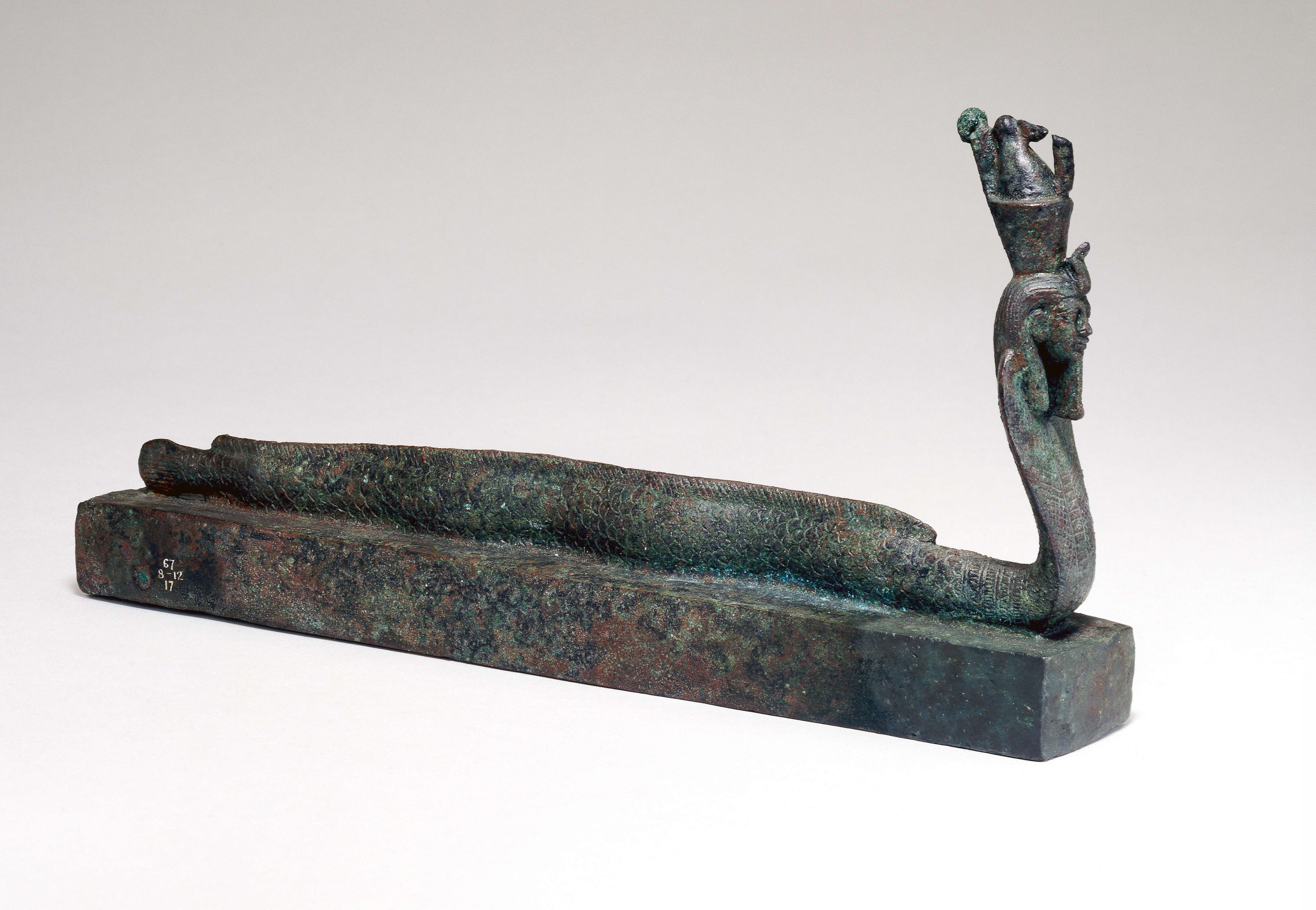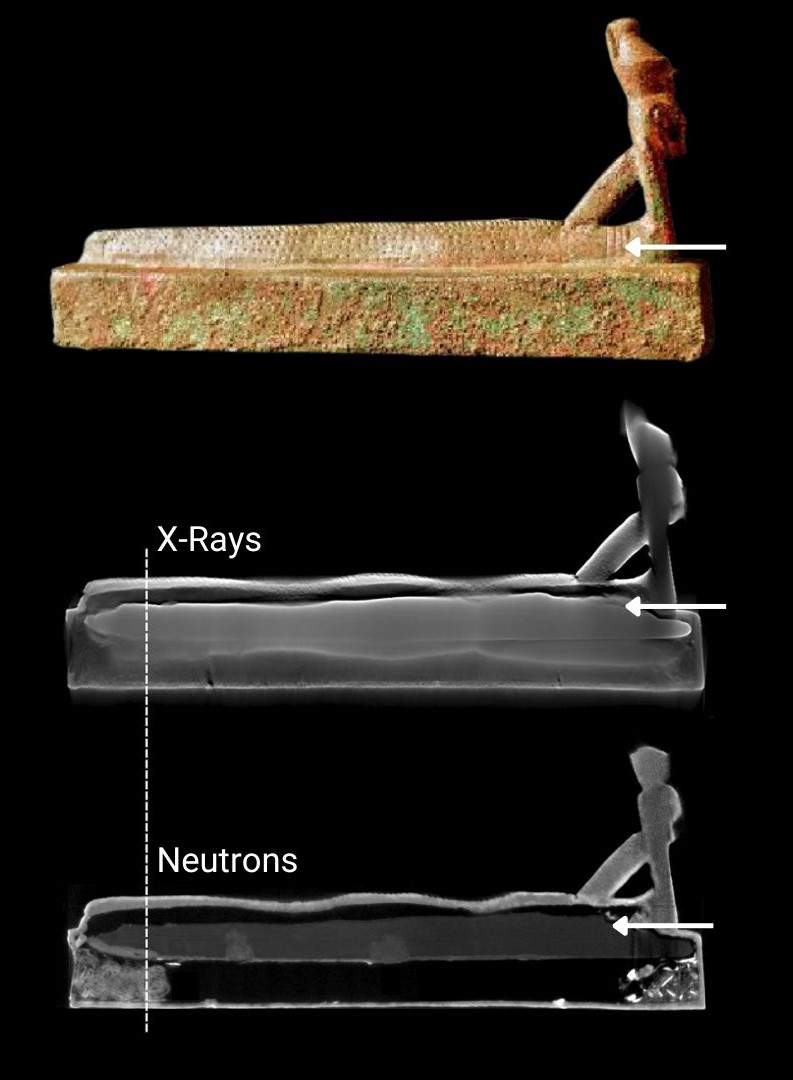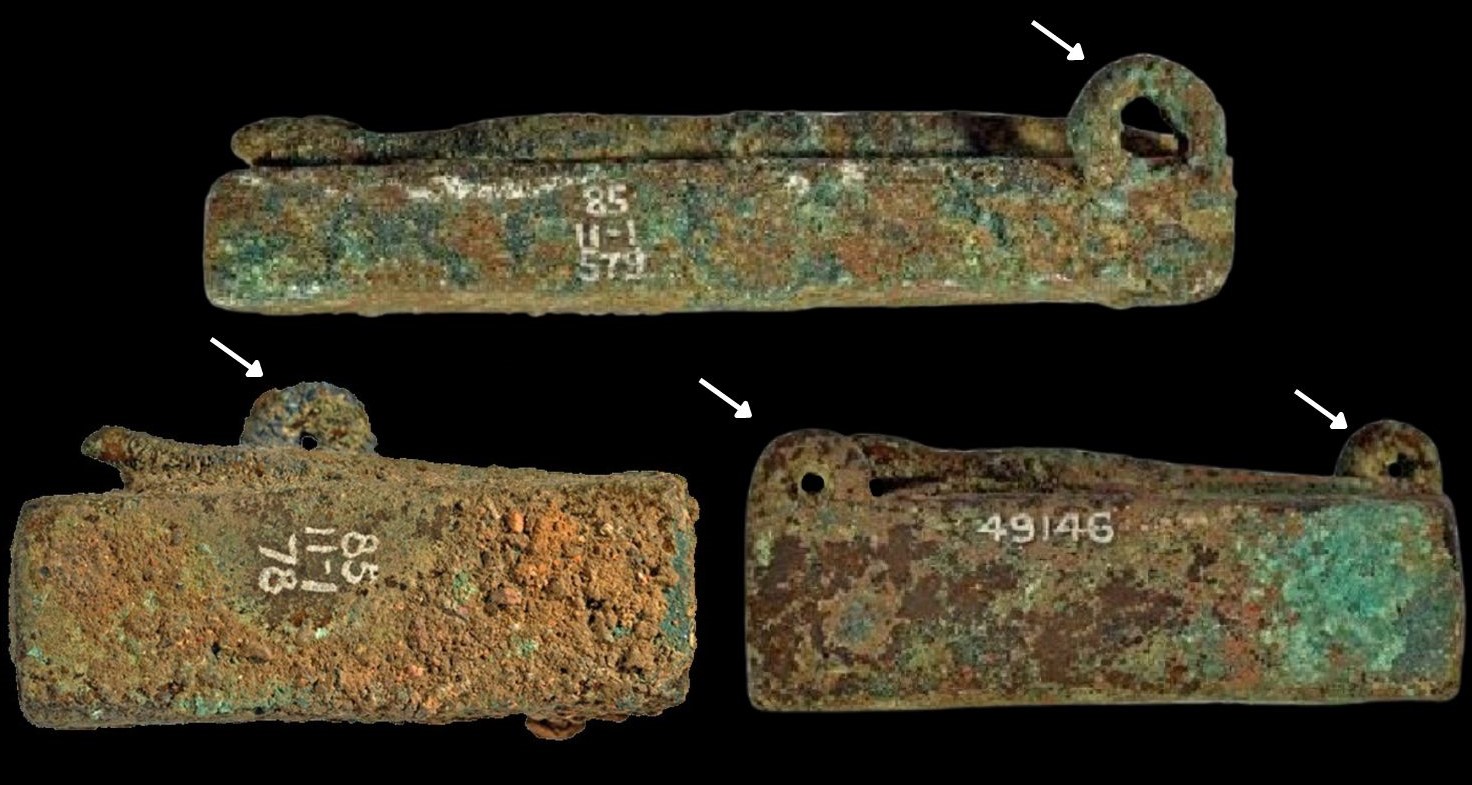
From securing your pet a place in the afterlife, to providing sacrifices to the gods (like the goddess ISIS) the mummification of animals was common practice in ancient Egypt. Many of these animals would have been placed either inside statues of the animal or in coffins with a depiction of the animal on it. These were placed in temples (probably for religious purposes) and eventually stored in labyrinthine underground buildings, which have preserved the votive boxes for millennia. Many of these boxes are now in museums across the world.
The British museum houses one of these collections which includes a set of 2500 year old animal coffins depicting lizard/eel-like figures. Researchers at the museum have performed imaging studies of these animal coffins to investigate their contents in a non-destructive way. Starting with X-ray imaging, they revealed that several of the boxes contained some ancient remnants. However, due to high content of dense metals such as copper and lead in the box structures themselves, the images of their contents were unclear.
To pierce through the dense metals with better effect, the team decided to try using neutrons. They brought six of these boxes to the ISIS Neutron and Muon source, to perform neutron tomography on our IMAT beamline. “By utilising the capabilities of neutron imaging we were able to study the sealed animal coffins non-invasively and further our knowledge on the fascinating world of animal mummification.” stated Dr Daniel O’Flynn, X-ray Imaging Scientist at the British Museum.
The clarity of the imaging produced allowed them to identify fragments of textile wrappings used for mummification, several bones and some materials used in manufacture/repair of the boxes. Many of the bones found were fragmented, but there were several longer, intact bones and even one entire, intact lizard skull (seen in the video below). Although imaging techniques cannot accurately determine species, the specifications of these remains seem to match that of North African wall lizards which also matches the markings on the lizard statue on top of one of the boxes.
As well as the characterisation of ancient remains, this study was able to reveal information on the manufacturing process of these boxes. For example, by comparing the X-ray and neutron images, large amounts of lead were identified in three of the boxes. Since lead is incredibly dense it absorbs the vast majority of X-rays, and can’t be imaged well in X-ray images, whereas in neutron studies lead is far more transparent. The distribution of lead found within the boxes, indicated that much of it had been in a molten state and poured in after the external box structure had been cast. This can be especially seen in one box (image right) where the lead fills gaps inside the eel statue on top.
One theory for the use of lead is that in ancient Egypt it was seen to have a particular status, used to make love charms, statues of the Gods and even to protect mummies. However, it is also possible that lead was used to weigh down the boxes with tall figures on top to prevent them from falling over. It is also seen in one of the boxes that lead may have been used in repair to support damaged areas of the box.
The three boxes containing lead were also the only three that did not have a loop structure on the outside (as seen in image right). This helped the authors to speculate that the loop structures may have been hanging mechanisms, meaning that some boxes could have been suspended from temple walls or paraded around in religious processions.
The study also uncovered many methods for the casting of the box itself, with some cast as a whole and some as a box with the statues welded on afterwards. The presence of clay or plaster and chaplet supports gave evidence for lost-wax casting. The different manufacturing techniques discovered have led the researchers to believe that there was no standardised process for producing these, making each coffin unique.
All in all, this study has demonstrated the great discoveries that can be uncovered from the combination of neutron and X-ray techniques. As Dr Anna Fedrigo, Neutron Imaging Scientist at the ISIS Neutron and Muon Source said, “Neutron imaging has many important applications in 21st century science. This study shows that it can also shed light on the inner structure of complex archaeological objects, including their manufacturing techniques and contents.”
Further information:
The full scientific paper can be found at https://www.nature.com/articles/s41598-023-30468-4
